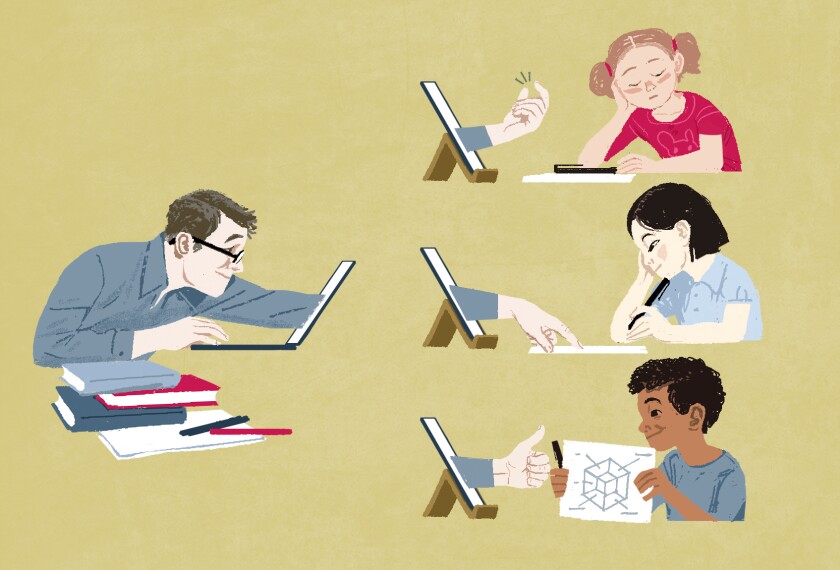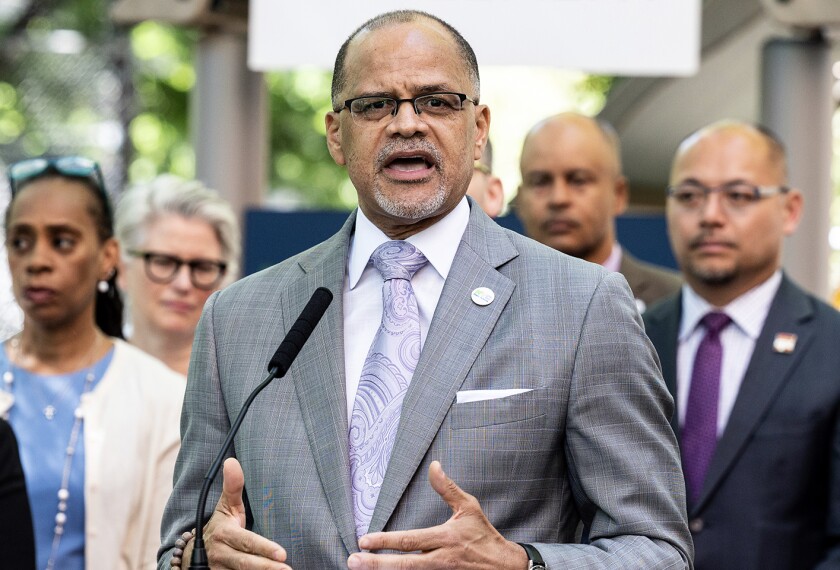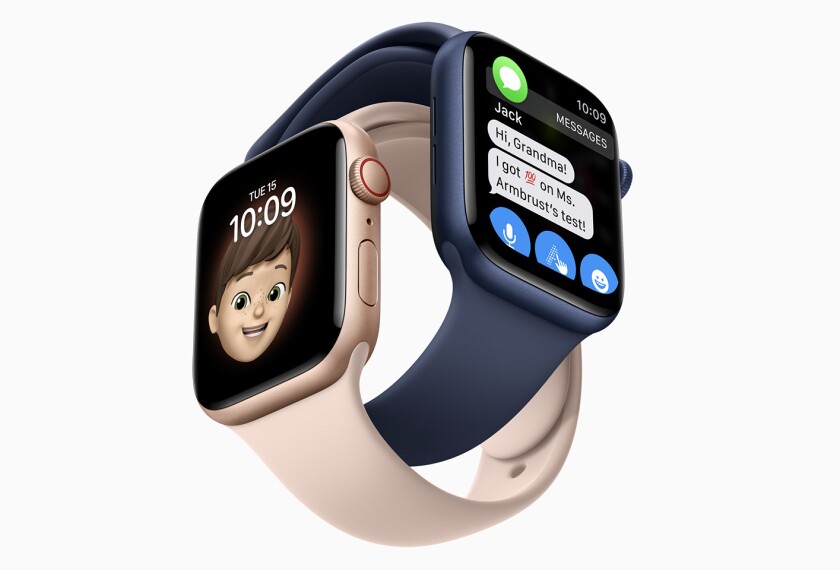This story is part of a special project called Big Ideas in which EdWeek reporters ask hard questions about K-12 education’s biggest challenges and offer insights based on their extensive coverage and expertise.
The pandemic launched, almost overnight, the most extensive natural experiment in digital learning ever undertaken. For thousands of districts, the emergency moves to online teaching and student monitoring involved frantic efforts to not only build the plane but train the pilots and load the passengers midflight.
It’s made for a bumpy ride for students and teachers returning to school, and blame for this year’s academic and technical challenges has often fallen on digital learning as a whole. That’s a shame, because teachers and leaders in schools who were technologically prepared for the pandemic say the emergency has given them new space and opportunities to explore better ways to connect with their students and adapt instruction to meet their individual needs.
“I think we need to be intentional, differentiating between pandemic and remote teaching done in an emergency and high-quality digital integration,” said Beth Lambert, who leads the Maine Learning Technology Initiative, which at nearly two decades old is the longest-running statewide 1-to-1 technology initiative in the country.
While we don’t yet have conclusive data on how digital learning has worked nationwide compared with in-person instruction, the evidence to date—both from national and state studies—suggests students of all backgrounds have progressed significantly less in 2020-21 than they would in a typical school year. Students in the earliest grades, who struggled the most with the technical expertise and autonomy needed for remote learning, likewise showed the greatest lags in academic growth.
And details from the 2020-21 school year only further complicate the picture on digital learning. For example, low-income, Black, and Latino students saw the largest gaps in learning growth and disproportionately stayed in fully remote instruction compared with white students. Asian students lost the least momentum in their learning, even though a majority of them continued to learn in fully remote settings by the end of the school year. And Native American students, who as a group returned to in-person learning faster than any but white students, showed significantly less progress than their white or Asian peers.
One possible reason? Many schools, particularly the fewer-resourced ones, did not go into the pandemic with the digital integration they thought they’d had. In January 2020, a few months before the pandemic reached the United States, the Consortium for School Networking found from a national sample of more than 500 member districts, a majority reported they had digital learning initiatives—at least one computer device for every student, learning-management software, efforts underway to use technology to personalize instruction for their students, and the like—but months of fully remote instruction have disabused many school leaders about their real digital readiness.
CoSN found little more than half of its surveyed districts provided any off-campus broadband access at all at the start of the pandemic, and only 10 percent subsidized home-internet access for low-income families. Many district leaders found the laptops and tablets provided as part of 1-to-1 initiatives did not have the networking capacity to run off weak home Wi-Fi signals or the data to stream live video. Those that had learning-management systems found not all teachers knew how to use them.
But for schools that did have a strong digital foundation, including technology infrastructure and the necessary staff development, the last year has helped decouple “digital learning” from “classroom computer use” and evolved their culture into one focused on flexibility and personalization for students.
Months of fully remote instruction have disabused many school leaders about their real digital readiness.
After more than a year of pandemic digital learning, CoSN in 2021 found districts are beginning to find their footing in digital learning; 95 percent of the more than 300 districts which CoSN surveyed this year reported providing at least some off-campus broadband access, and 27 percent now provide free or subsidized home broadband access to low-income students. The experience of digitally prepared districts during a solid year plus of learning during the pandemic suggests that using platforms to leverage teacher collaboration and focus on student supports can turn digital learning into an opportunity rather than a necessity borne of crisis.
For example, at D-B Excel, a blended-learning high school-within-a-school in Kingsport, Tenn., teachers had already been creating their own online lessons for two years before the pandemic, but they spent last summer auditing each lesson to be able to adapt it for in-person, hybrid, video, and fully asynchronous instruction. STEM and chemistry teacher Antonia Adinolfi said even though she has found it “exhausting” to teach in-person and virtual learners at the same time, it’s a practice she plans to keep with or without the pandemic. “It matters that if I have a student that’s absent but they are doing OK, they can still check in over Zoom with me, and … they can still have live instruction.”
Kern Kelley, superintendent of the 2,000-student R.S.U. #19 in Newport, Maine, said his staff was already experienced in using Canvas, Google Classroom, and learning-management technology, but a year of remote and hybrid digital learning has helped his teachers think of their students more broadly. Some have even participated in a statewide network of teachers developing an online repository of video and digitally based lessons.
“You are not teaching the students in your classroom and you happen to have virtual students; you are teaching the virtual students and you happen to have some of them in the classroom,” Kelley said. “This year has brought home the reality of virtual worker. That means you can work from anywhere. We’re seeing an influx of people coming up from New York and Boston to live here. So, we need to teach our students that your competition is not who you see in this room; it’s the world. I want them to be more prepared to adjust to the day-to-day reality of that.”
As more-contagious and vaccine-resistant strains of the coronavirus continue to press communities, district leaders who had expected this year to mark a return to fully in-person classes could find digital remote and hybrid learning continue to make up a significant portion of children’s educational experience. For schools to succeed, teachers and leaders will need to move past an emergency mindset when it comes to digital learning and build stronger foundations and connections for students in a digital future.
“We would all like to believe this is going to go away and we’ll never have to do this again, but I think that’s really missing the boat,” said Shanna Hensley, the principal of D-B Excel. “We have the opportunity to leverage technology in a way we never had before. Our students have access to technology 24 hours a day, and we as 21st-century teachers should be able to leverage that.”







